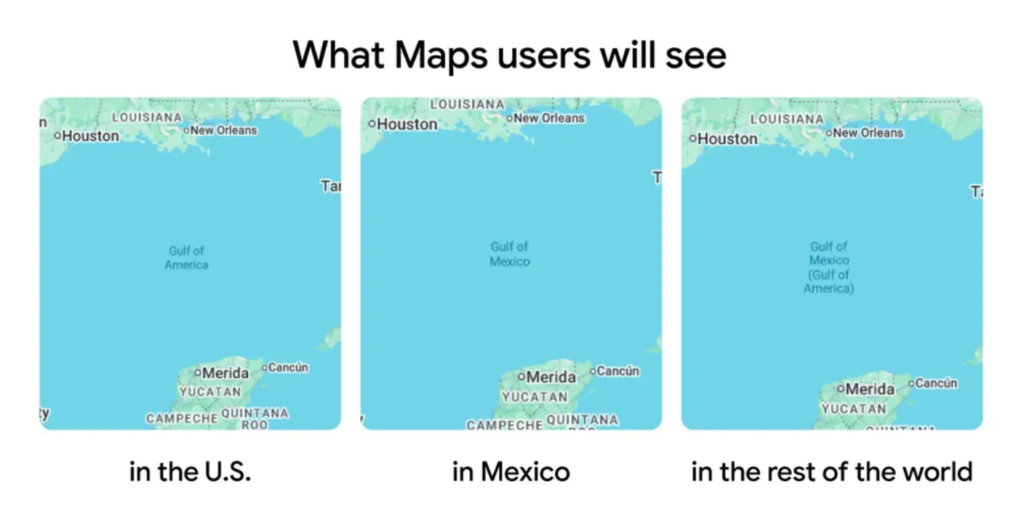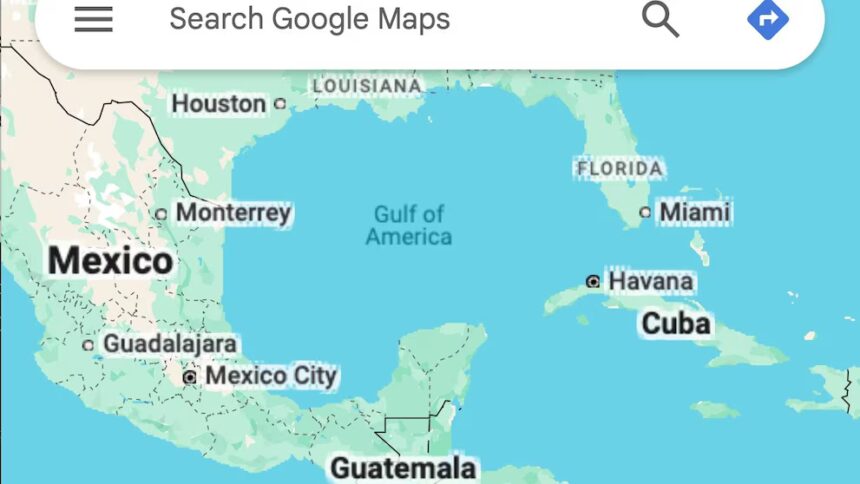Users checking Google Maps and Apple Maps might notice a controversial update — what was once the Gulf of Mexico now appears as the Gulf of America in certain regions. The name change follows an update by the Geographic Names Information System (GNIS), enacted after an executive order from President Donald J. Trump, which directed the renaming of specific national landmarks. This change, visible to U.S. users, remains inconsistent across regions, as Mexican users still see “Gulf of Mexico”. In contrast, others may see both names depending on their location and device settings.
The sudden alteration has fueled a heated debate, with critics arguing that politically influenced renaming of geographical features should not dictate digital platforms. Given the historical, economic, and cultural significance of the Gulf of Mexico, concerns have risen regarding the role of digital maps in shaping historical narratives and reinforcing political agendas.
What’s Happening & Why This Matters
Why Did Google and Apple Change the Name?
Both Google and Apple have confirmed that the change aligns with their long-standing practice of synchronizing place names with official government databases. Google spokespersons stated that their maps reflect updates from recognized institutions such as the GNIS, ensuring that their digital representations remain in line with the latest official records. Apple has also acknowledged the update, although some users report seeing the old name in specific instances.
The U.S. Department of the Interior formally enacted the change following the executive order, but implementation across mapping platforms has been gradual. Unlike some past renaming efforts, this update has not yet been universally adopted, leading to discrepancies in naming conventions. Additionally, while Denali has not yet been reverted to Mount McKinley, Google has indicated that it will make necessary updates if GNIS enforces a change.
How Do Users See the Change?
The renaming is not consistently displayed, as Google and Apple adjust their maps dynamically based on regional settings, device preferences, and language configurations. For users in the United States, “Gulf of America” is now the standard label on Google Maps, and Apple Maps is expected to follow suit in an upcoming update. However, the name remains “Gulf of Mexico,” reflecting national naming conventions for Mexican users. Outside of North America, some users see both names presented together, indicating a compromise between localized naming policies and global recognition.

Apple’s slower rollout has led to inconsistencies, but reports confirm that the company intends to finalize the transition for U.S. users before considering further changes.
The Political and Cultural Debate
Renaming globally recognized landmarks based on political directives has long been contentious. Critics argue that altering historically established place names for political or nationalistic purposes sets a troubling precedent, while supporters see it as an assertion of national identity.
The Republican Representative Dan Crenshaw of Texas actively pushed for the change to be fully implemented, even directly urging Apple CEO Tim Cook to expedite the update. On the other hand, opponents have raised concerns that global tech companies should not reinforce politically motivated renaming efforts without broader international and historical consensus. Google and Apple’s decision to follow official sources rather than take an independent stance suggests that future government-led changes could also reshape how locations appear on digital maps.
Other Name Changes Under Consideration
While renaming the Gulf of Mexico to the Gulf of America has gained attention, additional landmark name changes may soon follow based on evolving political initiatives. Mount Denali, formerly known as Mount McKinley, remains unaffected for now, but some sources indicate that potential revisions could occur depending on GNIS policy adjustments. Google has already stated that it will reflect any forthcoming name changes if GNIS enforces them, meaning that future renaming efforts—whether political or historical—could continue shaping digital geography.
TF Summary: What’s Next
The renaming of the Gulf of Mexico to the Gulf of America on Google and Apple Maps underscores the intersection of politics, technology, and historical recognition. While both tech giants follow official government naming conventions, this change has raised concerns over digital platforms’ role in reinforcing political narratives. As more government-led updates shape mapping services, users should prepare for ongoing changes that could redefine how places are labeled globally.
— Text-to-Speech (TTS) provided by gspeech


